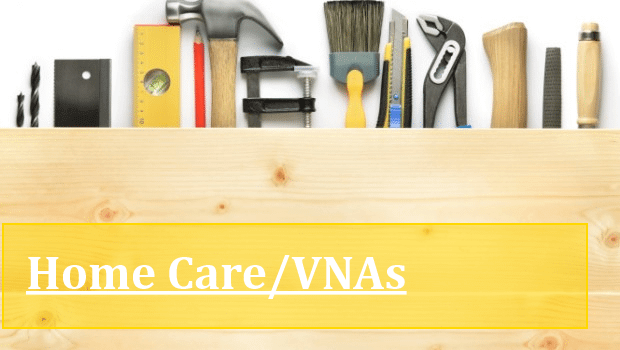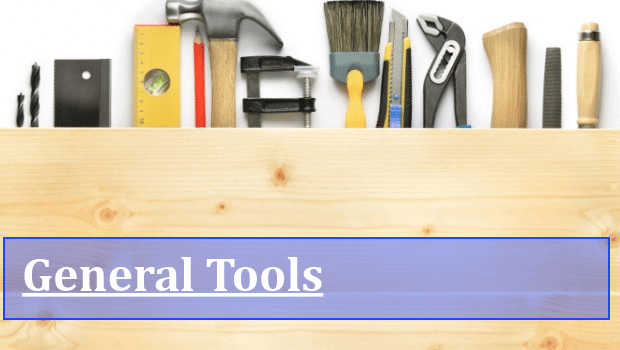"A Sense of Calm" is being used in over 600 care homes and schools, as well as by family carers at home, to help relax adults and children with a range of conditions, including dementia, Alzheimer’s, strokes, autism, Down’s syndrome and other learning difficulties, where the nature of their condition can lead to frustration, agitation, anxiety and sometimes rage.
DVD is 60 minutes long and features 6 video tracks of specially-created, flowing images, set to specially-composed music, designed to promote relaxation through sensory stimulation. We also include a booklet on how to get the best from your DVD. A Sense of Calm DVD:
Dave Mainwaring's Knowledge Network. Includes a more inclusive newsbasket: Mainzone Knowledge Network http://mainzoneknowledgenetwork.blogspot.com/
A newsbasket is on-line Internet publication containing comprehensive aggregated collections of information.
Caregiver Cards Cue Cards & Prompts for Alzheimers & Dementia Caregiver Cards
Caregiver Cards Cue Cards & Prompts for Alzheimers & Dementia Caregiver Cards:
<QUOTE>
Caregiver Cards provide essential visual picture cues that improve communication, promote independence and reduce anxiety for adults with memory, cognitive, or speech challenges due to dementia, Alzheimer’s disease, autism, deaf or hard of hearing, and other disabilities. An essential aid for helping adults understand and engage in activities at home or in residential care or memory care settings.
This easy-to-use, compact set of 76 cards includes simple, clear illustrations that prompt your loved one to understand and participate more independently in self-care and social activities.
The deck includes 146 picture cues covering 6 subject categories:
tivities of Daily Living
Instrumental
Activities of Daily Living
Activities
Command and Prompts
Emotions and Feelings
Events, People and Places
Packaged as a deck of 76 cue cards, double sided, ring bound so it opens easily to the desired color-coded section. Cards are glossy, heavy card stock so they can be wiped clean. Blank cards are provided so you can > add other specific center or activity cues. Binder rings allow for versatility of Caregiver Cards, allowing you to add or subtract illustrations that are important for your caregiving needs
http://tinyurl.com/prbgcnq
Caregiver Cards - Communication Cue Cards | Visual Picture Cues That
Improve Communication, Promote Independence... by Caregiver Cards <END QUOTE>
<QUOTE>
Caregiver Cards provide essential visual picture cues that improve communication, promote independence and reduce anxiety for adults with memory, cognitive, or speech challenges due to dementia, Alzheimer’s disease, autism, deaf or hard of hearing, and other disabilities. An essential aid for helping adults understand and engage in activities at home or in residential care or memory care settings.
This easy-to-use, compact set of 76 cards includes simple, clear illustrations that prompt your loved one to understand and participate more independently in self-care and social activities.
The deck includes 146 picture cues covering 6 subject categories:
tivities of Daily Living
Instrumental
Activities of Daily Living
Activities
Command and Prompts
Emotions and Feelings
Events, People and Places
Packaged as a deck of 76 cue cards, double sided, ring bound so it opens easily to the desired color-coded section. Cards are glossy, heavy card stock so they can be wiped clean. Blank cards are provided so you can > add other specific center or activity cues. Binder rings allow for versatility of Caregiver Cards, allowing you to add or subtract illustrations that are important for your caregiving needs
http://tinyurl.com/prbgcnq
Caregiver Cards - Communication Cue Cards | Visual Picture Cues That
Improve Communication, Promote Independence... by Caregiver Cards <END QUOTE>
AMERICA’S EMERGENCY CARE ENVIRONMENT
ACEP 2014 EM Report Card: AMERICA’S EMERGENCY
CARE ENVIRONMENT
About ACEP
The American College of Emergency Physicians (ACEP), founded in 1968, is the oldest and largest national medical specialty organization representing physicians who practice emergency medicine. With more than 32,000 members, ACEP continually monitors trends in the health care environment and analyzes issues affecting emergency physicians and their patients
CARE ENVIRONMENT
About ACEP
The American College of Emergency Physicians (ACEP), founded in 1968, is the oldest and largest national medical specialty organization representing physicians who practice emergency medicine. With more than 32,000 members, ACEP continually monitors trends in the health care environment and analyzes issues affecting emergency physicians and their patients
Alzheimer's/Dementia Hospitalization Wristband Project
Alzheimer's/Dementia Hospitalization Wristband: The wristband project does several things:
Upon admission, patients with a prior diagnosis have a Purple Angel affixed to their standard issue hospital wristband for identification purposes.
Purple Angel is placed on their door so that anyone entering knows they should approach with the patient’s special needs in mind.
Upon admission, patients with a prior diagnosis have a Purple Angel affixed to their standard issue hospital wristband for identification purposes.
Purple Angel is placed on their door so that anyone entering knows they should approach with the patient’s special needs in mind.
- Use of “sitters” will become standard practice, allowing families to take much needed breaks without worrying that their loved one will be left alone.
- A dementia screening will be added to the admission process in hopes of identifying cognitive impairment even if there is no prior diagnosis.
▶ The Difference Between EMR & EHR - YouTube
▶ The Difference Between EMR & EHR - YouTube
Quick Illustrated Video Differentiating EHR from EMR
shared by Matthew Smith on Wed, Jan 15, 2014 @ 01:28 PM
previous post on the differences between EMR (Electronic Medical Records) and EHR (Electronic Health Records) really resonated with our readers.
Thank you to several HD Insights blog readers for sending along this concise, illustrated video detailing the differences between an EMR and an EHR. We felt that this video is too good not to share with everyone.
Matthew Smith says Feel free to forward this post (and our previous post) as a simple explanation when someone in your department asks what the difference is between these two terms.
Quick Illustrated Video Differentiating EHR from EMR
shared by Matthew Smith on Wed, Jan 15, 2014 @ 01:28 PM
previous post on the differences between EMR (Electronic Medical Records) and EHR (Electronic Health Records) really resonated with our readers.
Thank you to several HD Insights blog readers for sending along this concise, illustrated video detailing the differences between an EMR and an EHR. We felt that this video is too good not to share with everyone.
Matthew Smith says Feel free to forward this post (and our previous post) as a simple explanation when someone in your department asks what the difference is between these two terms.
EMR vs. EHR – What is the Difference?
EMR vs. EHR – What is the Difference?: EMR vs. EHR – What is the Difference?
Posted by Matthew Smith on Tue, Jan 14, 2014 @ 12:21 PM
What’s in a word? Or, even one letter of an acronym?
Some people use the terms “electronic medical record” and “electronic health record” (or “EMR” and “EHR”) interchangeably. But at the Office of the National Coordinator for Health Information Technology (ONC), you’ll notice they use electronic health record or EHR almost exclusively. While it may seem a little picky at first, the difference between the two terms is actually quite significant.The EMR term came along first, and indeed, early EMRs were “medical.” They were for use by clinicians mostly for diagnosis and treatment.
In contrast, “health” relates to “The condition of being sound in body, mind, or spirit; especially…freedom from physical disease or pain…the general condition of the body.” The word “health” covers a lot more territory than the word “medical.” And EHRs go a lot further than EMRs.
Posted by Matthew Smith on Tue, Jan 14, 2014 @ 12:21 PM
What’s in a word? Or, even one letter of an acronym?
Some people use the terms “electronic medical record” and “electronic health record” (or “EMR” and “EHR”) interchangeably. But at the Office of the National Coordinator for Health Information Technology (ONC), you’ll notice they use electronic health record or EHR almost exclusively. While it may seem a little picky at first, the difference between the two terms is actually quite significant.The EMR term came along first, and indeed, early EMRs were “medical.” They were for use by clinicians mostly for diagnosis and treatment.
In contrast, “health” relates to “The condition of being sound in body, mind, or spirit; especially…freedom from physical disease or pain…the general condition of the body.” The word “health” covers a lot more territory than the word “medical.” And EHRs go a lot further than EMRs.
50 Best Senior Caregiving Tools Online | Minute Women Inc Home Care | Non-Medical Senior Care – Minute Women Inc
50 Best Senior Caregiving Tools Online | Minute Women Inc Home Care | Non-Medical Senior Care – Minute Women Inc: 50 Best Senior Caregiving Tools Online
50 Best Senior Caregiving Tools Online
It can be very frustrating when trying to find caregiving tools on the internet. You know what you need is out there but can spend hours finding the right tool.
list of the best caregiving tools that we could find on the internet.
50 Best Senior Caregiving Tools Online
It can be very frustrating when trying to find caregiving tools on the internet. You know what you need is out there but can spend hours finding the right tool.
list of the best caregiving tools that we could find on the internet.
Resources For Caregivers | AssistedLiving.com
Resources For Caregivers | AssistedLiving.com: Government and Nonprofit Resources For Seniors
Subscribe to:
Comments (Atom)

